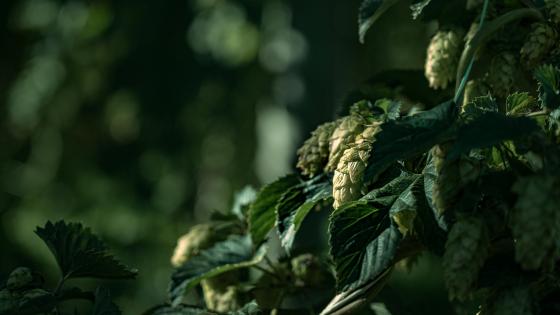
Hops
Hops
Hop (Fumulus lupulus) is a native herbaceous plant with a perennial crown and annual climbing stems (bines). Bines are similar to vines; however, bines wind around a support structure and lack the suckers or tendrils typical of vines. Hop crowns can survive for 25 years or more; however, the fast-growing bines die back to the ground each winter. Bines can reach a height of 15 to 30 feet in a single growing season. Hops are valued for their female cones, which contain the resins and essential oils used to provide the distinctive flavor, aroma, and bitterness to beer.
Key Requirements
| Land | Low to Medium |
| Labor | High |
| Capital | High |
Take the HortBizQuiz to see how much Land, Labor, and Capital you have for your operation.
Markets
- Wholesale
- Craft Breweries
Pests & Disease
The biggest threats to hops are downy and powdery mildew. Mycosphaerella leaf spot has been diagnosed at the Robinson Center and Japanese beetles have been a serious pest for growers. Mites can be serious in hot, dry years. Hop plants and cones are attractive to a number of insect pests including aphids, spider mites, wireworms, root weevils, corn earworms, Japanese beetles, potato leafhoppers, and cutworms.
Costs and returns are presented as estimates. They will vary based on your farm and markets.
Costs and returns are presented as estimates. They will vary based on your farm and markets.
Challenges
- Hop production is very labor intensive and if producers don’t have enough hands this crop might not be worth the investment.
- It normally takes three years for hops to come into full production.
Opportunities
- Growers will small acreage might market their hops to home based brewers, hobby brewers, and specialty stores.
- The increasing number of breweries and brewpubs has created market potential for small growers.